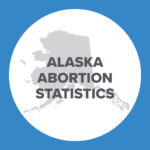Momentum for Late-Term Abortion Limits
(Click here for a chart detailing all state abortion limitations: Abortion Funding Limits)
In the last three years, an increasing number of states have debated and/or passed statutes limiting abortions beyond a certain point in pregnancy. Most recently, Texas legislators voted to ban abortions after five months of pregnancy and to increase the health and safety regulation of the state’s abortion clinics. On July 18, 2013, Governor Rick Perry signed the bill restricting abortions after 20 weeks, despite a failed filibuster and a mob takeover of the statehouse.
In total, 24 states have adopted a variety of gestational age limits on abortion (Alabama, Arizona, Arkansas, Delaware, Florida, Georgia, Idaho, Indiana, Iowa, Kansas, Kentucky, Louisiana, Massachusetts, Nebraska, Nevada, New York, North Carolina, North Dakota, Oklahoma, Pennsylvania, Rhode Island, South Carolina, South Dakota, Texas, and Virginia). The statutory age limits vary from the onset of fetal heartbeat (which can be detected as early as six weeks), to the most common limits based on research that shows the fetus is capable of sensing pain as early as 20 weeks, up to the third trimester of pregnancy (typically 28 weeks).
Heartbeat Bans
Two states have recently passed laws restricting abortion after detecting a fetal heartbeat. Aside from banning abortion not necessary to save the life of the mother (which many state legislatures had done before these laws were struck down by Roe v. Wade), the fetal heartbeat bans are the strictest abortion laws in the nation. In March 2013, the Arkansas Legislature overrode Governor Mike Beebe’s veto and passed the Arkansas Human Heartbeat Protection Act. This law bans abortions after 12 weeks if a heartbeat is detected and makes exceptions for pregnancies from rape or incest, or pregnancies that risk the life or physical health of the mother, or when lethal fetal abnormalities exist.
The law was temporarily blocked from enforcement in May 2013 by a federal judge pending litigation brought by the American Civil Liberties Union of Arkansas and the Center for Reproductive Rights. Also in March 2013, North Dakota passed a heartbeat bill that could ban abortions as soon as a heartbeat is detectable, which in some cases would be as early as five weeks. In July 2013, just two weeks before the bill was to go into effect, a federal judge blocked enforcement pending litigation.
Twenty-week Limits
Thirteen states (including the aforementioned Arkansas and North Dakota) have passed bans on abortions after 20 weeks. Nine of those states choose to mark the 20 weeks as postfertilization (Alabama, Arkansas, Idaho, Indiana, Louisiana, Nebraska, North Dakota, Oklahoma, Texas), three measure it as gestational age (Arizona, Delaware, Georgia), and one measures it as 20 weeks of pregnancy (North Carolina). The distinction among postfertilization, gestation, and pregnancy can result in a difference of two weeks of pregnancy depending on how gestational age and pregnancy are defined (many physicians measure pregnancy by a woman’s last menstrual period). Eleven states with 20-week bans have passed similar bills in the last three years, with the exception of Delaware and North Carolina, which have 20-week statutes that date from before Roe v. Wade. Several of the 20-week bans are blocked by the courts pending litigation, including Arizona, Georgia, and Idaho’s.
Other Statutory Age Limits
Eleven states have statutory restrictions at a later point in pregnancy, commonly at 24 weeks or the third trimester. Kentucky statutorily bans abortion after the first trimester, commonly accepted to be 13 weeks of pregnancy. Kansas bans abortions after 22 weeks gestation. Five states ban abortions after 24 weeks of pregnancy including Massachusetts, Nevada, New York, Pennsylvania, and South Dakota. Four states have a third trimester ban, commonly accepted to be 28 weeks of pregnancy, including Florida, Iowa, South Carolina, and Virginia. According to well-known abortionist Dr. Leroy Carhart (in a video taken without his knowledge by LiveAction), only four doctors in the country will perform an abortion on a baby over 26 weeks. The number of abortionists willing to do the procedure after 20 weeks may be as high as 300 with nearly half of that number willing to carry them out at 24 weeks, according to a Guttmacher study from 2008.
Viability Statutes
Sixteen states have statutes that prohibit abortions after viability (typically 24 weeks, though data from the National Institute of Child Health and Human Development shows some cases of survival even earlier) including California, Connecticut, Hawaii, Illinois, Maine, Maryland, Minnesota, Missouri, Montana, Ohio, Rhode Island, Tennessee, Utah, Washington, Wisconsin, and Wyoming. In Minnesota the viability statute is not enforced because it was held to be unconstitutional in Hodgson v. Lawson.
The Supreme Court gave physicians the right to determine when a fetus is viable in Colautti v. Franklin. According to undercover investigations, some prominent late-term abortionists do not acknowledge that a 23-week baby is just one week away from viability outside of the womb (let alone admit to mothers contemplating abortion that the baby is fully formed at this point in pregnancy and that a small but growing number of babies are able to survive outside of the womb even at this early stage).
No statutory age limitation
Eleven jurisdictions do not have any statutory restriction on the age of the aborted child. These are Alaska, Colorado, the District of Columbia, Michigan, Mississippi, New Hampshire, New Jersey, New Mexico, Oregon, Vermont, and West Virginia. Michigan and Mississippi both have unenforceable bans on all abortion, which the Michigan courts at least have interpreted to be a viability standard.
Exceptions to the statutes
Unfortunately, many states claiming to have limits on late-term abortion end up actually having looser restrictions because states add exceptions for the mother’s life and health to the bill. Many states have very broad exceptions that include phrases such as Florida’s “to save the life or preserve the health of the pregnant woman.” Most of these states allow for physician discretion for what constitutes a health issue for the mother (including mental and emotional health issues). States with statutory age restrictions on abortion that include broad exceptions for life and health include Florida, Iowa, Kentucky, Massachusetts, Nevada, South Dakota, and Virginia.
Some states have limited physician discretion by including more specific phrases in their statutory exceptions, such as Alabama’s “serious risk of substantial and irreversible physical impairment of a major bodily function, not including psychological or emotional conditions.” Arkansas, Georgia, Idaho (20-week ban), Louisiana, Oklahoma, and Texas also have this exception in their abortion statutes. Some states, like Kansas, Nebraska, North Dakota, Ohio, and Utah, have similar exceptions but they do not add the phrase “not including psychological or emotional conditions.” Four states (Idaho’s third-trimester statute, Michigan, New York, and Rhode Island) have laws that allow for exceptions to late-term abortion restrictions only if the mother’s life is in peril. If a state does not statutorily specify an exception for physical health, then it allows a much broader interpretation of when abortion is allowed.
Furthermore, some states allow late-term abortion in the case of fetal abnormality. Georgia, Louisiana, Texas and Utah allow for such abortions only in cases of lethal fetal abnormalities. Maryland is the only state that allows abortion for any fetal abnormality. The ability to have a 33-week, late-term abortion for any fetal abnormality (here, a reported 31-week discovery of a seizure syndrome) resulted in the recent death of Jennifer Morbelli on February 7, 2013 in Maryland. Morbelli’s death certificate states that the cause of death was Disseminated Intravascular Coagulation “due to or as a consequence of Amniotic Fluid Embolism following Medical Termination of Pregnancy due to or as a consequence of fetal abnormalities.”
A Guttmacher study that offered a different interpretation of abortion statutes argued that the only Supreme Court-sanctioned (what they refer to as “constitutional”) limit on abortion is viability with exceptions for maternal life and health (referring to Roe v. Wade and Planned Parenthood v. Casey). But in Webster v. Reproductive Health Services, the court refused to strike down a state statute that required physicians to determine if the child was viable if the pregnancy was reported to be 20 weeks or more. The other closely-related decision by the Supreme Court was Stenberg v. Carhart, where a partial-birth abortion ban was struck down in Nebraska because it did not include an exception for the health of the mother and was too vague. These decisions together do not produce a ban on states protecting babies (who can feel pain as early as 20 weeks) from abortion after 20, 22, or 24 weeks.
Professor Randy Beck in his McGeorge Law Review article, “State Interests and the Duration of Abortion Rights,” argues that Justice Kennedy’s dissent in Stenberg highlights the Court’s recognition of many state interests in regulating abortion beyond the viability of the fetus. Additionally, Beck says that the majority of the Court in Gonzales v. Carhart recognized additional state interests before viability such as respect for human life, protecting the reputation of medical professionals, and fighting infanticide. The recognition of additional state interests in unborn children may lend support to 20-week bans that emphasize the age that a baby is capable of feeling pain.
Many states have recognized a unique interest in protecting a fetus from pain, including Alabama, Arkansas, Indiana, Louisiana, Nebraska, and Oklahoma, and have passed gestational-week bans based on the evidence that a child feels pain at 18-20 weeks. Finally, on June 18, 2013, the U.S. House of Representatives passed the Pain-Capable Unborn Child Protection Act prohibiting abortions after 20 weeks with an exception in cases where the mother’s life is in danger or rape or incest has occurred.
Bans of this type continue to enjoy broad public support as debates over them and demonstrations regarding them continue to mount.
*Betsy Johnson is a law student and Blackstone Fellow serving at the Charlotte Lozier Institute.
























